Mexican-born Guillermo del Toro is one of the rare auteurs, whose individuality as an artist didn’t get overrun by the Hollywood machine. It’s a great achievement, particularly considering the contemporary landscape of genre filmmaking in Hollywood. At the same time, del Toro’s wide-ranging oeuvre includes visually entrancing arthouse cinema. Moreover, there are films where he straddled the fine line between arthouse and blockbuster.
Guillermo del Toro mentions that his signature visuals and thematic obsessions are a result of his devotion to comic books. But he is not simply drawn to the traditional heroes of comic strips. He rather loves monsters or monster-type characters in the superhero genre. Del Toro is also influenced by Mexican folklore, Victorian paintings, and Spanish Catholicism. In the cinematic realm, the filmmaker’s chief influences are the works of Alfred Hitchcock and Luis Bunuel. While those two are respectively known as the ‘Master of Suspense’ and ‘Master of Surrealism’, del Toro is revered as the ‘Master of Macabre’.
Guillermo del Toro’s use of colors and foreboding symbolism largely contribute to his subliminal storytelling methods. He creates inventive and intricate visual puzzles that gracefully carry his profound themes to the viewers. Here’s a look at the director’s oeuvre, ranked from the worst to the best.
10. Blade II (2002)
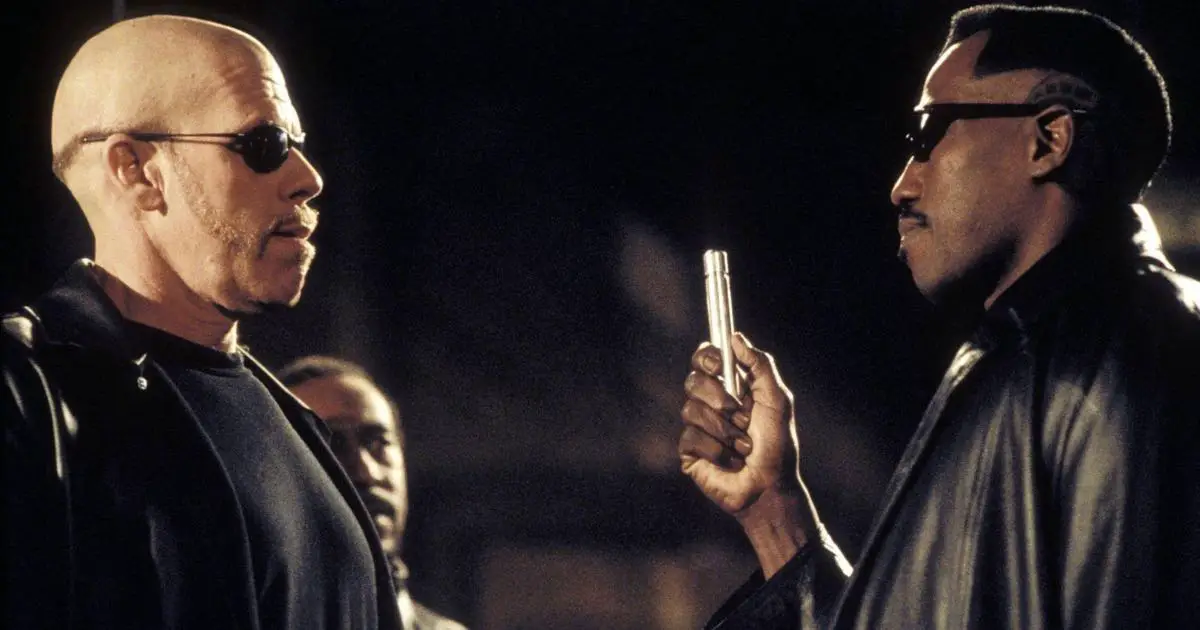
Guillermo del Toro was a director-for-hire in this sequel to Blade (1998). The Blade is a fictional Marvel superhero comic book character. He is a half-vampire, who doesn’t inherit their weakness related to sunlight. He is also human enough to understand the threat of vampires to hunt them. Blade universe withholds the perfect premise for B-movie action whose influences are diverse: from Hong Kong martial arts to video games and old-school vampire mythology.
Nevertheless, the action-packed narrative might seem outdated, taking into account the evolution of action choreography. What constitutes the story is the typical nonsensical product of Hollywood. But that’s not the problem with Blade II. Del Toro has made conventional Hollywood blockbusters later in his career. However, what Blade II desperately lacks is the strikingly dark vision of del Toro. He keeps moving the narrative at a frenetic pace. Sadly, the imagery doesn’t stay with us and who knows how much ended up on the cutting room floor?
9. Mimic (1997)
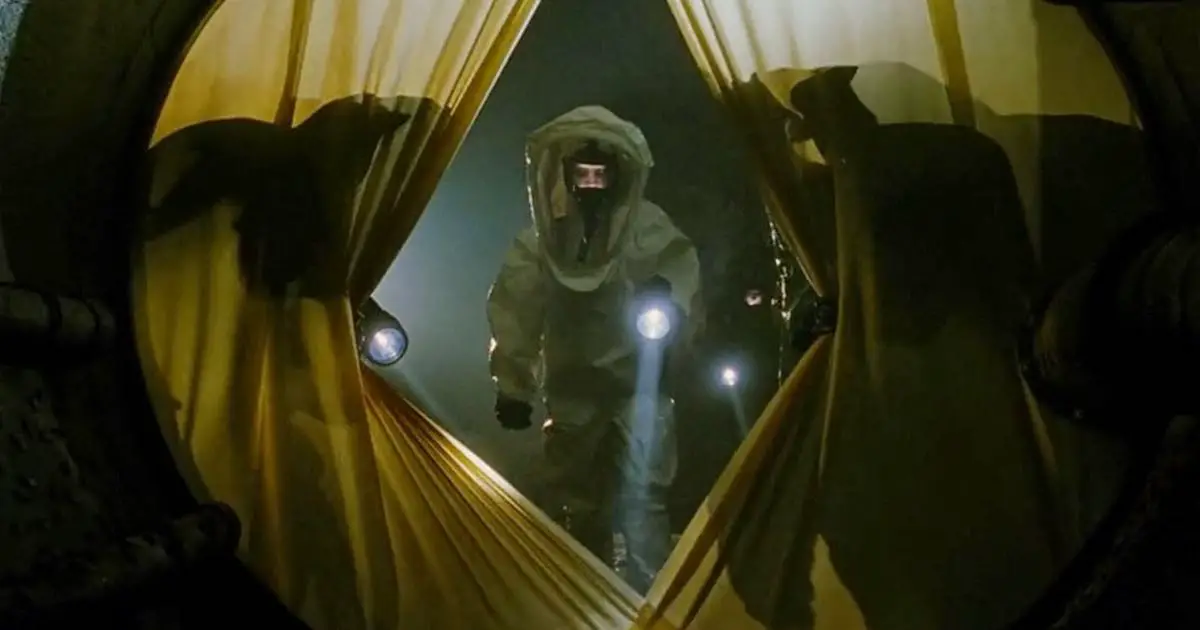
Mimic was Guillermo Del Toro’s second feature film and his Hollywood debut. Impressed by his unique take on the vampire lore in Cronos, the Weinstein brothers hired del Toro to make a monster flick involving genetically modified insects. Del Toro’s brand of horror largely differs from the traditional Hollywood approach. Hence Mimic suffered from studio interference, reshoots, and last-minute edits.
The narrative is largely set in the subterranean atmosphere of the subway stations. The mutated giant carnivorous insects make their nest there, before setting up for an attack.
The film is flawed in terms of characterizations or performances. However, del Toro’s artistic vision seems to have been largely derailed because of the studio demands. At the same time, it’s a decently entertaining film with some signature del Toro visuals. In 2011, the makers released a ‘Director’s Cut’ which runs a few minutes longer. Furthermore, the mildly modified color palette created a more intimidating atmosphere.
8. Crimson Peak (2015)
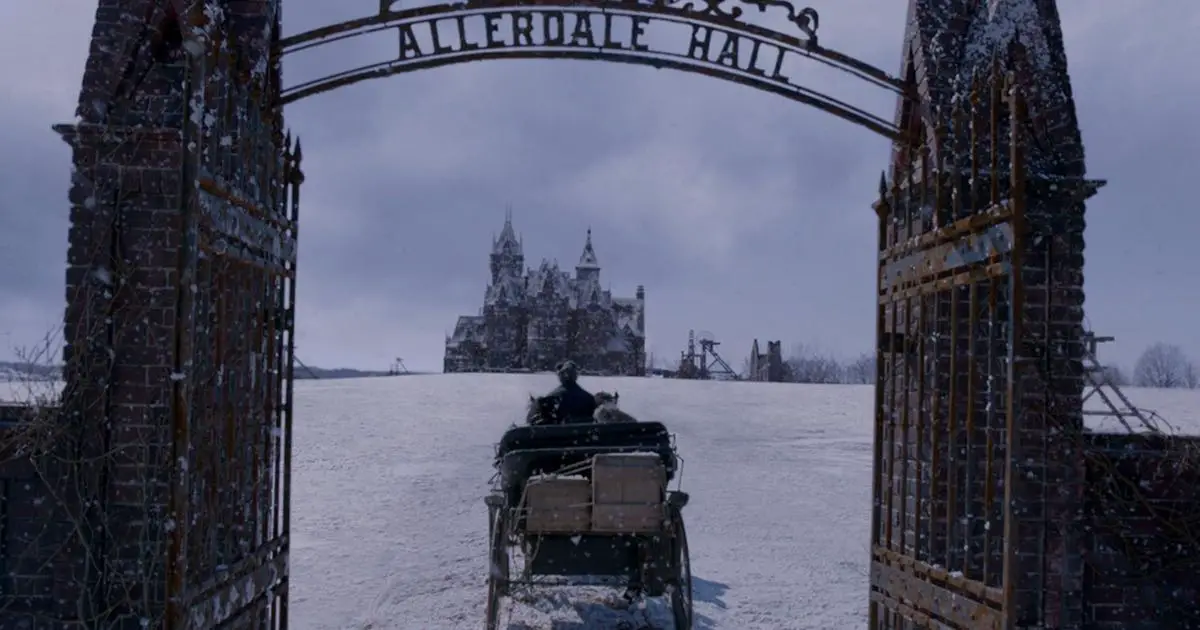
Guillermo del Toro shows an affinity for the Gothic genre. The gothic themes – vulnerable heroines, emotional distress, and isolation – are prevalent in his two best works, The Devil’s Backbone and Pans’ Labyrinth. Crimson Peak, which is set in a huge, spooky mansion, withholds all the lush visual possibilities of the gothic. The film revolves around a young woman named Edith who aspires to be a writer. But she falls in love with a charming British baronet and soon marries him. They move to the baronet’s family home, where Edith falls ill, and witnesses ghastly things crawling around the mansion.
Crimson Peak isn’t as multi-layered as del Toro’s best works, and it is a little predictable. Whatever it lacks in characterization and writing, del Toro makes up for it with his beautiful macabre imagery. The sordid details of the murders and the ghostly apparitions provide a terrifying gothic backdrop. Moreover, the big mansion and its creepy atmosphere become a character in themselves.
7. Pacific Rim (2013)

Pacific Rim is one of Guillermo del Toro’s major passion projects. It brings together his love for giant robots and huge monsters. The film is influenced by the Godzilla universe and Japanese pop culture. In Pacific Rim, monstrous alien creatures known as ‘Kaiju’ invade the earth through an inter-dimensional rift deep in the ocean. Humanity comes together to fight these creatures by building giant robots. The robots are operated by two pilots who link themselves with the machines to smash and bash the Kaijus.
Pacific Rim contains sleek, eye-popping CGI action sequences. The action is also more coherent and easy to follow compared to the messy work in Transformers films. Moreover, the narrative contains a reasonably good emotional core with Rinko Kikuchi brilliantly handling the female-lead character. The film showcases all the visual strengths of del Toro. But there’s also an ample dose of quirky humor which keeps the narrative light and less brooding.
6. Hellboy (2004)
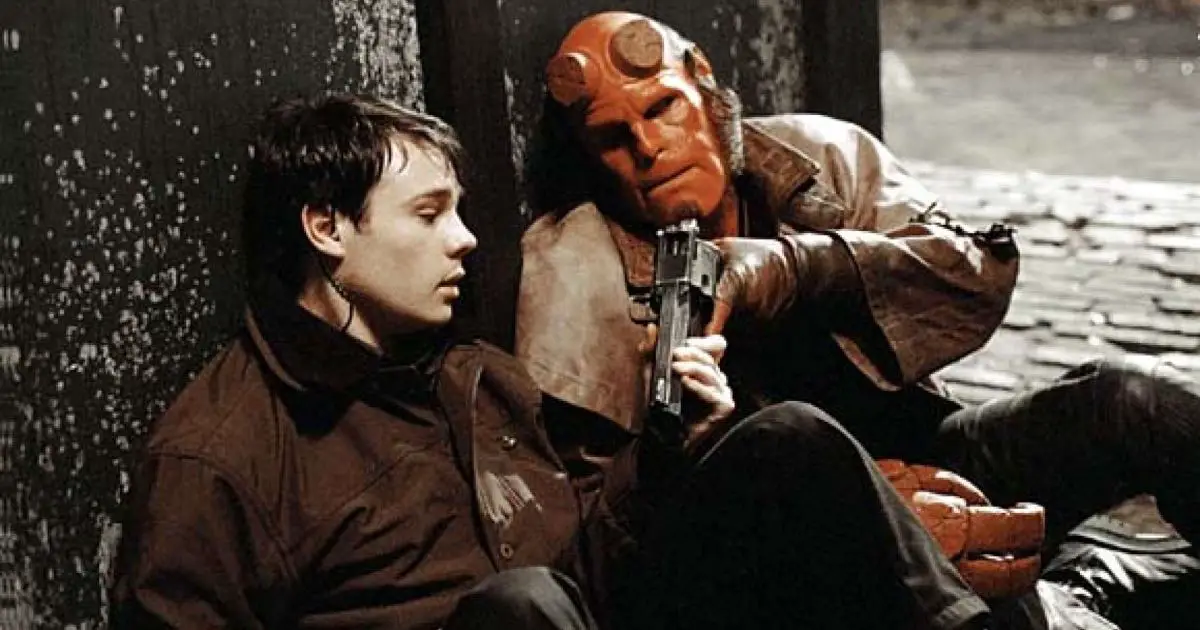
Hellboy is an American comic strip superhero created by the artist Mike Mignola. He is a scarlet-skinned demon who embraces the humanity of his adoptive father. Hellboy is Guillermo del Toro’s favorite superhero, and he mentions it as one of the top five movies in his filmography.
Hellboy was made long before the Marvel franchise. The project was green-lit after the success of X-Men and Spider-Man movies. Though like the other superhero movies it didn’t do great at the box-office, Hellboy was clearly one of the most imaginative films in the genre.
The film was made with del Toro’s frequent on and off-screen collaborators. This includes actors Ron Perlman and Doug Jones, cinematographer Guillermo Navarro, and composer Marco Beltrami. Hellboy is largely a movie about outcasts. And in terms of characterization as well as action, del Toro eschews the template set by modern superhero flicks. Furthermore, some of Hellboy’s fantastical imaginations and themes later found their way into his Oscar-winning film The Shape of Water.
5. Cronos (1993)
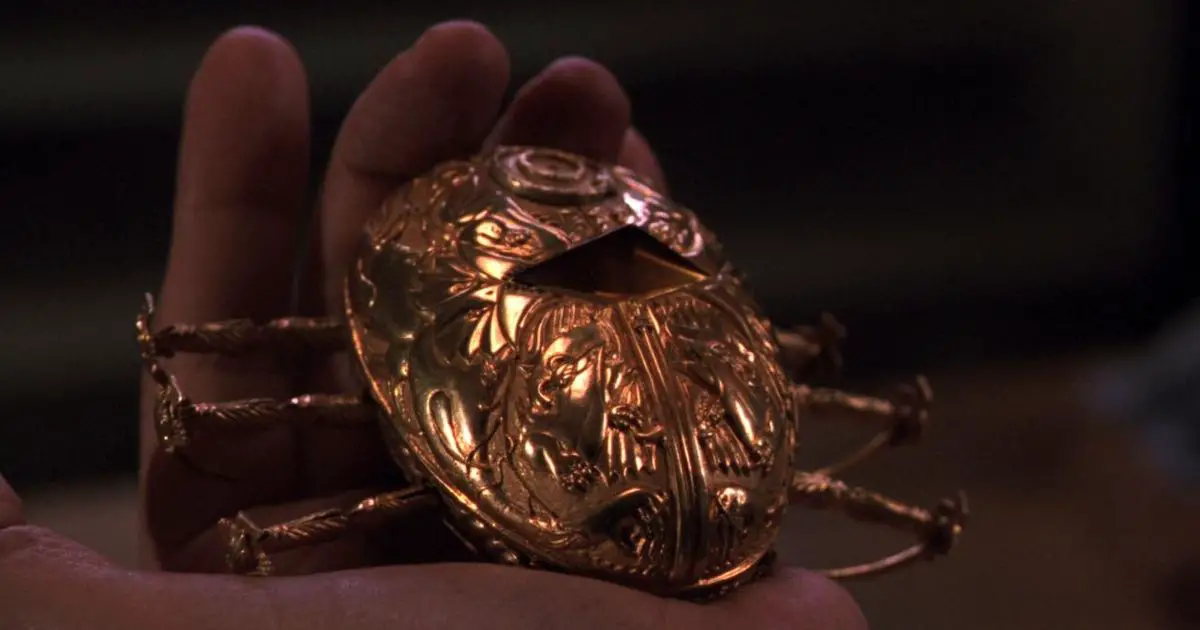
Cronos marks del Toro’s feature film debut. This Mexican Spanish language film offers a haunting and singular take on vampirism. The story revolves around an elderly antique dealer who stumbles upon a mysterious object. This object that resembles a gold scarab beetle, made by a 16th-century alchemist, holds the key to immortality. While the idea of eternal life is tempting, the price one pays for it is huge and irredeemable.
Cronos was shot at del Toro’s native place Guadalajara. It was at the time the second high-budget Mexican movie. It isn’t a typical vampire feature though there are few standard vampire tropes. The word ‘vampire’ is never uttered. It’s rather a detailed character study of a man cursed with immortality. Del Toro fills his narrative with raw emotions and mesmerizing visual compositions. There’s also abundance of Catholic imagery and symbols in the narrative. All this makes Cronos rightly balanced between existentialist and spiritual undertones.
4. Hellboy II: The Golden Army (2008)

Fresh off the great critical success of Pans’ Labyrinth, del Toro made this sequel involving the good-hearted demon. Hellboy and his gang of misfits continue their missions as part of a secret government paranormal squad. In Golden Army, team Hellboy attempts to destroy Prince Nuada of an ancient race. The prince wants to annihilate humankind by bringing back his mechanical warriors, known as the ‘Golden Army’.
The plot might seem annoyingly simple. Yet del Toro’s visually layered staging and amusing character dynamics make it a brilliant action fantasy. Del Toro proves himself to be the master of creature-makers. From tooth-fairies to Baba Yaga, and Angel of Death, his penchant for imagining monsters has no limitations. Ron Perlman’s charisma and swagger is also the biggest strength in the sequel. Though Hellboy II was critically adored, it didn’t make much money. Hence, there was great reluctance to make the final part of this planned trilogy. In 2017, del Toro finally announced that the third part is never happening.
3. The Devil’s Backbone (2001)
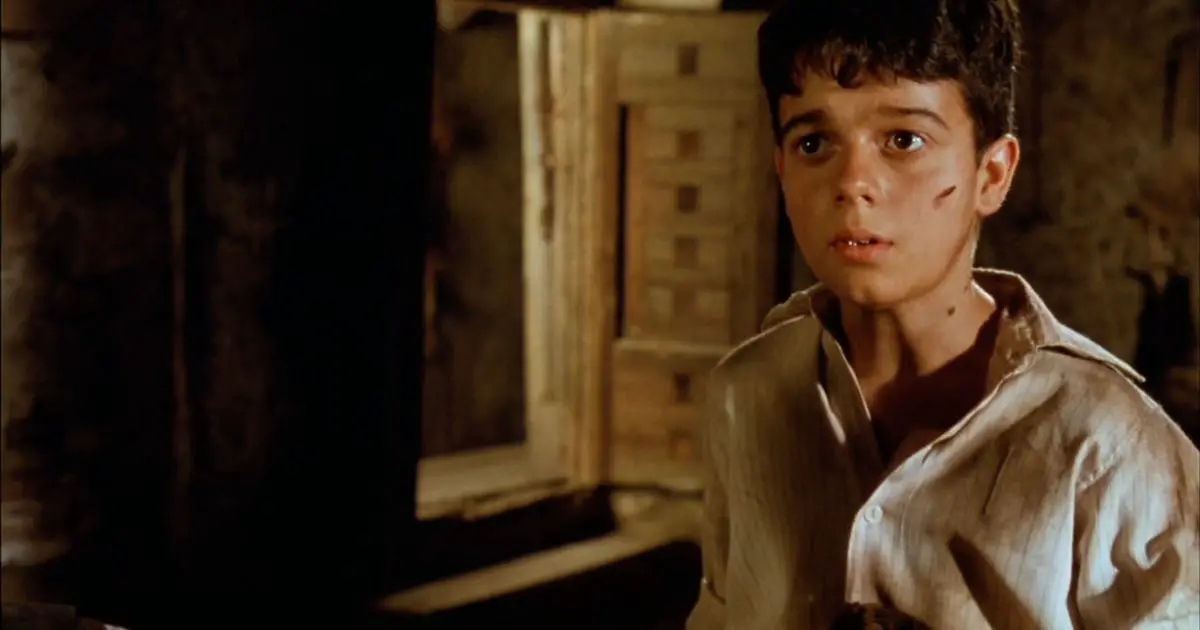
After making two average Hollywood studio flicks, Guillermo del Toro returned to his Spanish roots. Backed by the Spanish auteur Pedro Almodovar and his brother Agustin, The Devil’s Backbone is set during the end of the Spanish Civil war. The story revolves around a young boy named Carlos who is sent to a remote orphanage. He discovers mysterious happenings within the orphanage. A ghost haunts Carlos and tries to communicate something to him. In the process, the boy encounters the dark side of human nature.
Mostly shot in a single location, del Toro generates a great amount of atmospheric dread and tension. Just as Cronos can’t be reductively called a vampire flick, The Devil’s Backbone is much more than a ghost feature. The supernatural phenomenon gradually becomes a profound symbolism to explore the dark historical reality. While the final act and the ending feel a bit conventional, del Toro’s fascinating imagery keeps us engaged. Del Toro expanded the themes he undertook in The Devil’s Backbone to make his career’s best work yet.
2. The Shape of Water (2017)
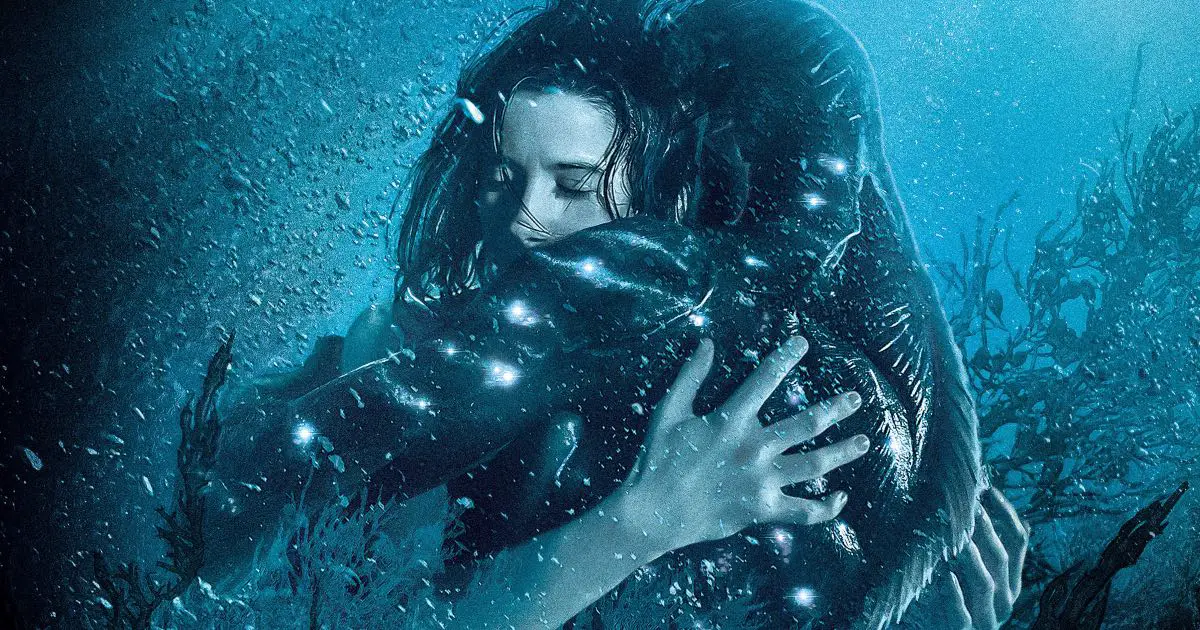
Monster fantasy is a perennial theme in Guillermo del Toro’s oeuvre. In The Shape of Water, the ‘monster’ is more compassionate and perceptive than its human counterparts. The treatment of ‘monster’ in the narrative symbolically denotes the social and cultural stigmatization. The era or context of the narrative – 1960s Cold War paranoia – also proves to be very significant. Naturally, love and acceptance are proposed as the cure for such collective hatred and paranoia.
Such fascinating themes are presented through an interspecies love story and of course a secret government program. The brilliant Sally Hawkins plays Eliza, a mute janitor working in a government facility. There she comes across a sensitive and yearning, amphibious man.
The uniqueness of del Toro is his ability to incorporate a highly fantastical setting into real-world scenarios. The result is an enchanting mix of weird and wonderful. Del Toro employs the nostalgic period elements in a spellbinding manner.
1. Pan’s Labyrinth (2006)

All through del Toro’s movies, we see a mix of real-world and otherworldly horror. And the filmmaker strikes a perfect balance in this dark and challenging fairytale. The narrative is set in 1944 Spain, during Franco’s authoritarian fascist regime. In these darker times, a young girl named Ofelia accompanies her pregnant mother to live with her stepfather. Ofelia finds that her stepfather is a sadistic military officer.
While wishing to escape the brutal adult world, Ofelia meets a weird pan-like creature in a labyrinth, deep in the woods. The creature tells Ofelia that she is the princess of an underground kingdom that she left long ago.
Pan’s Labyrinth is a tale of despair and rebellion, elevated by del Toro’s dark poetic vision and rich symbols. Jean Cocteau’s Beauty and the Beast (1946) and Victor Erice’s Spirit of the Beehive (1973) were a huge influence on del Toro’s writing and visual design. Overall, Pan’s Labyrinth is the single greatest achievement, not just in del Toro’s filmography, but in the genre of fantasy.
Conclusion
Time and again, filmmakers have proved that you can develop a profound narrative while making an entertaining film. From Charles Chaplin, Fritz Lang, Hitchcock to Kurosawa, Spielberg, and Bong Joon-ho filmmakers continue to transcend the limitations of genre narrative. Guillermo del Toro belongs to this list of film artists whose lush visual spectacles withhold deeper meanings. He smartly puts together complex themes within a bigger canvas. His unique brand of magical realism and historical horror would hopefully continue to resonate with movie-lovers across the globe.
Over to you! Which are the best Guillermo del Toro movies and how would you rank them? Let’s talk in the comments below.
